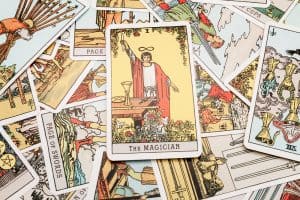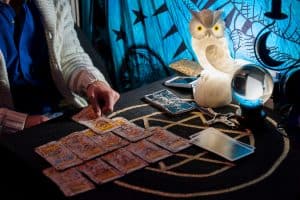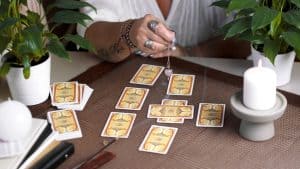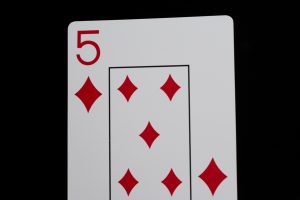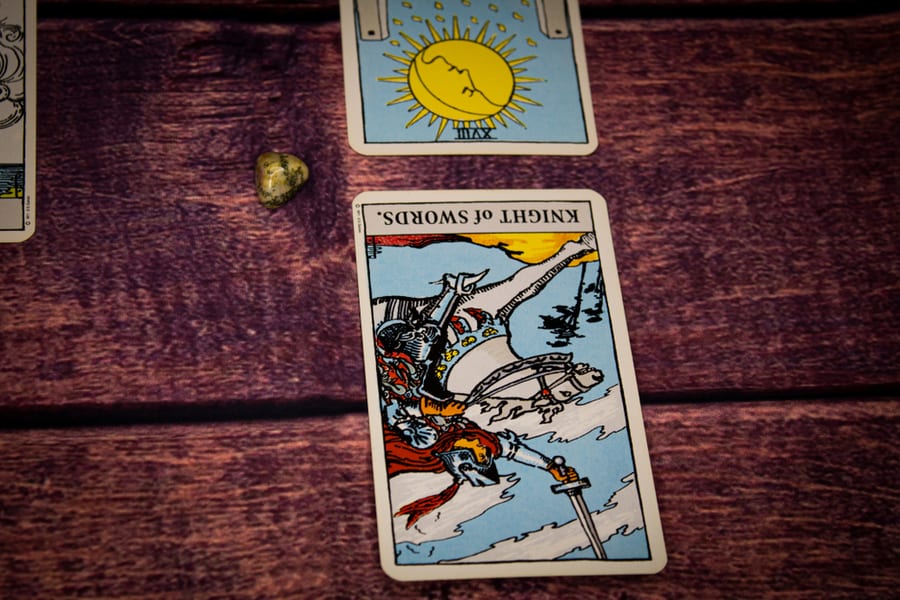
Are you interested in learning about reversed tarot cards and how to interpret them? Do you find yourself confused when you come across an upside-down card in your readings?
If yes, you’ll find that reversed cards add an exciting layer to tarot readings. Reversed tarot can look confusing and intimidating, but they don’t have to be.
Interpreting them is ultimately a way of uncovering each card’s unique and individual meaning. It helps broaden our understanding of divination and opens up new possibilities.
They aren’t always seen as a good thing. But with the right approach, reversed cards give us deeper insights into our lives and help nurture our inner growth.
After all, the universe can’t be neatly organized into neat boxes, and these cards help us better explore the nuances of life.
So, what are reversed tarot cards, and how do we interpret their meanings?
Reversed cards in tarot are drawn upside-down in a reading. It usually means the card’s energy is blocked or weakened somehow. There are inner conflicts, challenges, or obstacles impacting the card’s potential. Use your intuition and practice daily to master tarot reversals.
In this article, you’ll learn four key ways to interpret reversed tarot orientation accurately. Some tips are also discussed to help make your tarot reading session more meaningful. Let’s get started!
4 Ways To Interpret Tarot Card Reversals
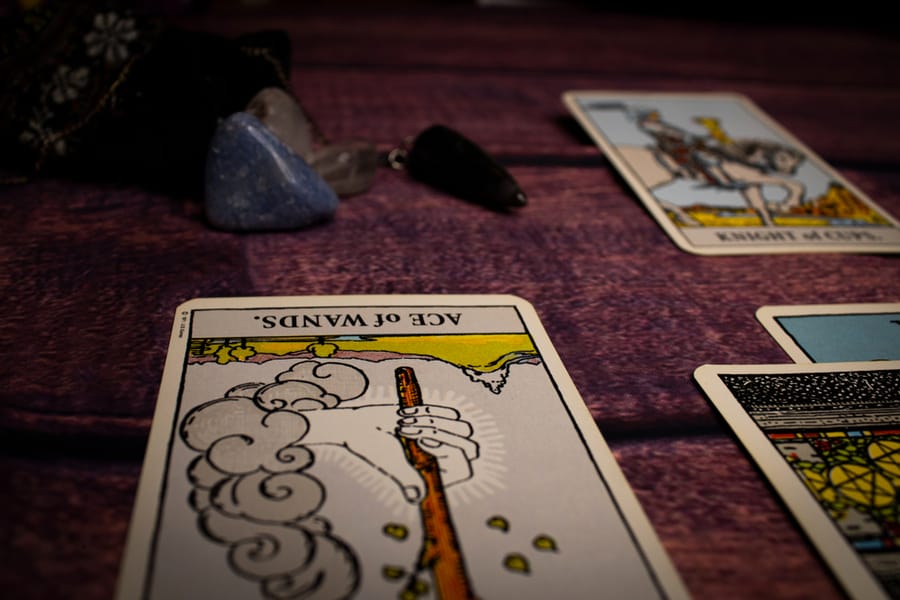
When a tarot card is pulled in the reversed position, it suggests that the energy is distorted. The interpretation of a reversed card may vary depending on the context of the reading and other cards surrounding it.
However, the following are common ways to interpret tarot cards in an inverted position.
1. Refusal and Opposite Meanings
The reversed card indicates the opposite of its upright meaning, showing a lack of progress or a setback. It doesn’t mean that the situation is wrong but that the card’s energy is not fully utilized.
Like a refusal to accept the card’s influence, it signifies a lack of awareness or a hidden message being blocked.
For Example
- The reversed Tower card would mean a significant crisis, while the upright Tower shows upheaval.
- The Sun, the most positive tarot card, indicates a lack of joy or enthusiasm when upside down. But an upright Sun represents happiness and positivity.
2. Blocked Energy

Have you ever felt stuck or unable to move forward? This is the feeling of blocked energy. After stopping the tarot shuffle, your hands can feel heavy, or the cards don’t move quickly.
It simply means your energy is blocked and not flowing freely. It can be due to fear, resistance, or other factors preventing you from moving forward.
For Example
- The inverted Three of Cups suggests that you are holding onto heartache or emotional pain, and something is preventing you from healing and moving on.
- If the reader draws reversed Page of Swords, it means you are afraid to speak the truth and unable to think clearly.
3. Delayed Progress

Tarot reversals can also signal a delay in the progress or slow-moving energy. If you’re doing a daily tarot reading, you should take more time to achieve your goals or wait for the right moment.
The reasons behind delayed progress can be anything from a lack of self-confidence to feeling overwhelmed. Tarot is showing you the path. You are the only one who can walk it.
For Example
- The Ace of Pentacles in opposite orientation indicates you need to notice visible results from your efforts.
- Similarly, the reversed Eight of Wands signifies you are experiencing a delay in your plans.
4. Inner Conflicts

Reversed tarot convey a lot of messages. One is a sign of inner conflicts or resistance to the cards’ energy. The reason behind this is your doubt or conflicting desire, which prevents you from embracing the power of cards.
For Example
- If Two of Cups appears upside down, it motivates you to struggle and connect with others. You should also respect your current relationships due to a painful past.
- Likewise, the opposite Seven of Swords expresses the need to let go of any deception, scheming, or manipulation you are holding onto.
Common Misconceptions About Reversed Tarot Cards
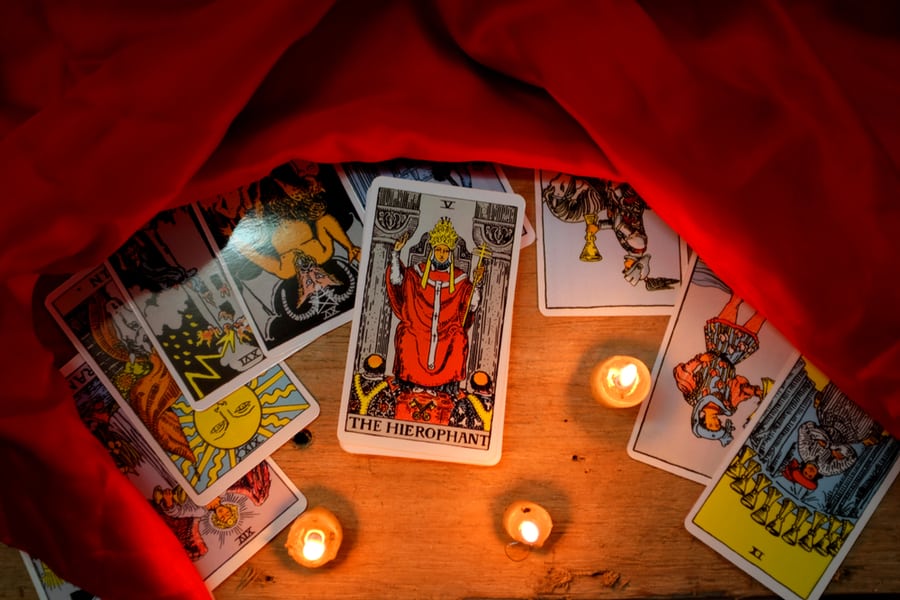
There are so many myths about tarot cards. From telling your future to dealing with dark magic and receiving them only as gifts, tarot cards are associated with a plethora of misconceptions.
Such myths make them sound more negative or ominous than they actually are. Here are some false beliefs about reversals and the truth behind them.
- These cards are always bad. Although these cards can indicate energy blockage, they also provide valuable insights and opportunities for growth.
- They mostly mean the opposite of their upright meaning. While this can be true in some cases, the definition of reversed tarot varies depending on the context of the reading.
- Reversed cards are more significant than upright cards. It’s not the case in reality. You should give an equal weightage to both upright and reversed cards in an interpretation.
- Reversed tarot is a warning for adverse outcomes. It is not true because, in most cases, they offer profound growth to cope with the challenges.
- They often bring bad luck. It is also a vague remark. However, they indicate a setback but also provide insights into the paths forward.
So, instead of watching them as bad luck, you should approach tarot reversals with an open mind.
Tips and Tricks for Reading Tarot Reversals
Reading reversed tarot cards can be challenging, but with practice and patience, it becomes a valuable tool for deepening your readings.
Following are some useful methods to help you improve your tarot interpretation skills.
Tip #1: Start With a Strong Foundation of Upright Meanings
Before you effectively read reversed tarot cards, you need to have a solid understanding of the upright meanings of each card.
Tip #2: Consider the Position of the Tarot Card
The position of the reversed card, past, present & future, within a spread gives you some clues about its meaning.
For instance, a reversal in a past position indicates an unsolved issue from the past. In contrast, a reversed card in the future portrays potential challenges.
Tip #3: Use Your Intuition
Trust your intuition when interpreting reversed cards. By trusting your gut feelings, the meaning of the reversal will be immediately apparent to you.
Connect with your tarot deck on a deeper level and feel the sensations you get about the card’s meaning.
Tip #4: Pay Attention to the Imagery
The imagery of reversed cards is also a way to understand their purpose. Look for the visual cues that indicate blockage, obstacle, or energy distortion.
Tip #5: Practice, Practice, and Practice
The more you practice reading these opposite cards, the easier it will become for you. Pull a daily card and practice beginner exercises for tarot in both positions; upright and reversed. You’ll indeed develop a deeper understanding of the cards over time.
To Sum It Up
Reversed tarot cards provide guidance and clarity to help you overcome the hurdles of life. They offer a profound insight into yourself and your environment if appropriately interpreted.
By following these tips, you’ll be able to read reversed tarot cards more accurately and effectively. Remember not to overthink or complicate them — just trust your intuition!



